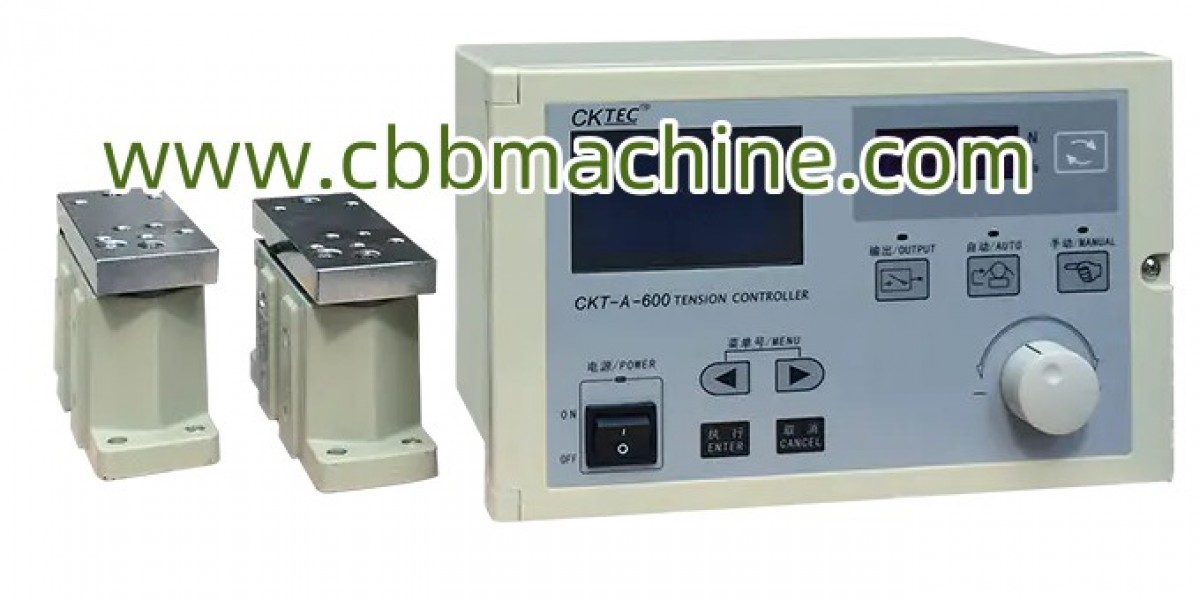Maximizing Precision and Efficiency with Magnetic Powder Brakes
In today’s fast-paced industrial landscape, achieving precision and efficiency in machinery operation is crucial to maintaining high-quality production standards. Whether you're in the packaging, textile, or printing industry, controlling the speed and torque of your machinery with minimal downtime is essential. One advanced technology that has gained significant popularity in industrial machinery is the Magnetic Powder Brake. This innovative braking system offers a reliable and cost-effective solution for regulating torque and speed, improving overall system performance and reducing maintenance needs.
In this blog, we will delve into the workings of Magnetic Powder Brakes, their key advantages, and how they help improve operational efficiency across various industries.
What is a Magnetic Powder Brake ?
A Magnetic Powder Brake is a device used to control the speed and torque of rotating machinery. Unlike conventional braking systems that rely on friction between components to generate resistance, Magnetic Powder Brakes use a non-contact method that utilizes electromagnetic fields to control braking force.
The brake consists of three main components:
Rotor: The rotating part that is connected to the machinery.
Stator: The stationary component with an electromagnetic coil.
Magnetic Powder: A fine powder that is suspended between the rotor and stator.
When an electric current passes through the coil in the stator, it generates a magnetic field that causes the powder to align in chains. This creates resistance, which in turn applies controlled braking force to the rotor. By adjusting the strength of the magnetic field (via the electric current), the braking force can be precisely controlled, allowing for smooth and gradual deceleration or speed regulation.
Why Choose a Magnetic Powder Brake?
1. Precision Torque Control
One of the standout features of a Magnetic Powder Brake is its ability to provide precise torque control. This is especially valuable in applications where controlling tension or speed is critical, such as in winding or unwinding processes. The torque can be adjusted easily by varying the current supplied to the stator, offering real-time control over the braking force. This precise control helps prevent issues like material overrun, stretching, or misalignment, ensuring smoother operations and higher-quality products.
2. Non-Contact Operation
Unlike traditional braking systems that rely on physical contact between parts, Magnetic Powder Brakes operate without direct contact between the rotor and stator. This non-contact design eliminates the wear and tear typically associated with friction-based brakes. As a result, the brake system requires less maintenance and is less prone to breakdowns, extending the lifespan of the equipment. With fewer moving parts that can wear out, businesses can enjoy more reliable and cost-effective operations.
3. Smooth and Gradual Braking
In many industrial processes, abrupt or jerky movements can cause damage to materials or disrupt production. Magnetic Powder Brakes excel in providing smooth, gradual braking, which is essential for processes that require delicate handling of materials, such as in textile or film manufacturing. The ability to apply controlled braking force without sudden stops ensures that operations remain steady, reducing the risk of material breakage and downtime.
4. Lower Maintenance and Operational Costs
Traditional braking systems often need frequent maintenance and parts replacements due to wear caused by friction. Since Magnetic Powder Brakes work through electromagnetic forces and have minimal physical contact between components, they significantly reduce maintenance costs. Their durability and longer lifespan mean fewer repairs and replacements, which translates into substantial savings in both time and money.
5. High-Speed Performance
Many industries require high-speed machinery for efficient production, and Magnetic Powder Brakes are designed to meet these demands. Since these brakes do not rely on friction, they can operate effectively even in high-speed environments without overheating or losing performance. Whether it’s for high-speed winding systems or packaging machines, Magnetic Powder Brakes offer reliable braking control without compromising speed or efficiency.
Applications of Magnetic Powder Brakes
The versatility of Magnetic Powder Brakes makes them suitable for a wide range of applications across various industries. Here are some common uses:
1. Winding and Unwinding Systems
In industries such as textiles, paper, and film production, precise control over the tension during winding and unwinding is essential to avoid material damage. Magnetic Powder Brakes are commonly used in these systems to maintain consistent torque and prevent issues like over-stretching or tearing of materials. By adjusting the braking force, operators can ensure smooth and controlled material handling throughout the process.
2. Packaging Machinery
Packaging lines often rely on Magnetic Powder Brakes to regulate the speed of machines that fill, seal, and label products. These brakes ensure that materials are processed at the right speed without exceeding the tension limits. This helps in preventing problems such as over-acceleration or machine misalignment, ensuring that products are packaged efficiently and without defects.
3. Printing Presses
In the printing industry, precise control of paper speed and tension is essential to maintain print quality and prevent errors such as misprints or misalignments. Magnetic Powder Brakes are used to control the speed of the paper feed in printing presses, ensuring that the paper moves steadily and with the right amount of tension. This minimizes the risk of paper tearing or misalignment, leading to higher-quality printed products.
4. Conveyor Systems
In automated production lines, Magnetic Powder Brakes help control the speed and deceleration of conveyor belts. This is crucial for systems where materials are transported at high speeds, as it helps ensure smooth transitions and prevents items from being damaged or displaced. The precise braking control offered by these brakes optimizes material handling and ensures smooth operation.
5. Test Equipment and Load Simulation
Magnetic Powder Brakes are also commonly used in testing environments to simulate various load conditions. By adjusting the braking force, engineers can simulate different torque scenarios to test the performance of mechanical systems. This makes Magnetic Powder Brakes a valuable tool for R&D and quality testing applications.
Conclusion
The Magnetic Powder Brake is a powerful tool for improving the efficiency and precision of industrial machinery. Its ability to provide smooth, adjustable torque control, combined with its non-contact design, offers a wide range of benefits, including lower maintenance costs, extended equipment lifespan, and improved operational performance. Whether you're in the textile, printing, packaging, or material handling industry, incorporating a Magnetic Powder Brake into your systems can significantly enhance overall production efficiency and reduce downtime.








